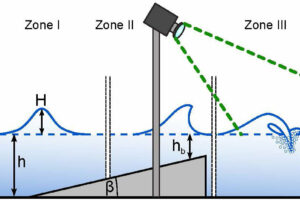While the Internal Revenue Service (IRS) may have nominally satisfied the 180-day deadline in the Inflation Reduction Act (IRA) to establish procedures for taking advantage of special rules applicable to small solar and wind facilities located in or connected to low-income communities (LIC), the agency’s guidance (the LIC Notice, Notice 2023-17) may have disappointed owners of solar and wind facilities hoping for speedier implementation of the program.
Designed to increase access to renewable energy in low-income communities, the so-called Low-Income Communities Bonus Credit Program-which is only in effect for 2023 and 2024 (absent a carryover of unused limitation)-allows Treasury to allocate bonus amounts of “environmental justice solar and wind capacity limitation” to certain facilities, increasing their available Tax Code Section 48(a) energy investment tax credit. Eligible facilities must have a maximum net output of less than 5 megawatts of alternating current.
The annual capacity limitation that Treasury can allocate under the program is 1.8 gigawatts of direct current per year, but the LIC Notice provides that Treasury will only start accepting applications for its prioritized facilities (those that constitute qualified low-income residential building projects or qualified low-income economic benefit projects) in the third quarter of 2023 (and the application window will only be 60 days long). Applications for remaining facilities (those located in a low-income community or on Indian land) will be accepted at a later time.
The delayed implementation and phased approach indicate that Treasury anticipates not being able to allocate the entire 1.8 gigawatts in 2023. Further, the IRS has reserved a certain allocation of calendar-year 2023 capacity limitation for each of the four facility categories:
The high-level, initial guidance provides threshold criteria that may be used to determine which applicants are allocated bonus capacity limitation. Namely, applications may be given preferred consideration if the applicant facility:
- Is owned or developed by community-based organizations and mission-driven entities.
- Has an impact on encouraging new market participants.
- Provides substantial benefits to low-income communities and individuals marginalized from economic opportunities.
- Has a higher degree of commercial readiness.
The LIC Notice states that these factors will be further fleshed out in subsequent guidance, and that the Department of Energy (DOE) will be responsible for reviewing applications for eligibility and providing administrative services with respect to the program. The DOE will ultimately make recommendations to the IRS regarding which applications should receive an allocation of bonus capacity limitation.
Importantly, no guidance beyond the limited definition in the statute has been provided regarding what constitutes “financial benefit” or regarding how to determine whether a “financial benefit” is being provided to a specific person. Qualified low-income residential building projects and qualified low-income economic benefit projects are both required to show that the financial benefits of the electricity produced by the solar/wind facility are provided to certain low-income households.
The LIC Notice also articulates the program’s overarching goals, which are to:
- Increase adoption of and access to renewable energy facilities in low-income and other communities with environmental justice concerns.
- Encourage new market participants.
- Provide social and economic benefits to individuals and communities that have been historically overburdened with pollution, adverse human health or environmental effects and marginalized from economic opportunities.
The LIC Notice makes clear that even if a taxpayer is allocated bonus amounts of capacity limitation pursuant to the program, eligible property must be placed in service within four years of the bonus award or the allocated capacity limitation will revert back to the IRS to allocate under the carryover rules. The notice also makes clear that only facility owners are eligible applicants and that facilities that were placed in service prior to the award are not eligible for the allocation. Further, an allocation of bonus amounts of capacity limitation is not a determination that the facility will qualify for the Section 48 credit generally.
Source: Breaking Energy











Add Comment